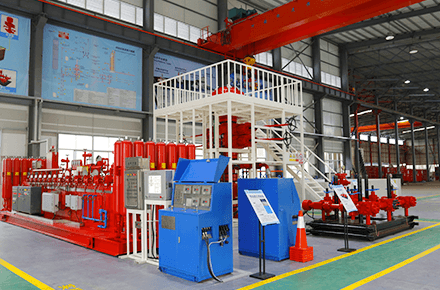Blowout preventers (BOPs) are critical safety devices in the oil and gas industry, designed to prevent the uncontrolled release of high-pressure fluids during drilling operations. Ensuring the safety and effectiveness of BOPs through rigorous pressure testing is paramount to the success of drilling operations and the protection of personnel and the environment. This article delves into the best practices for conducting BOP pressure tests, highlighting the importance of preparation, execution, and documentation.

BOP pressure testing is a comprehensive process that evaluates the integrity and functionality of the blowout preventer system. The tests are conducted to ensure that the BOP can withstand the pressures it might encounter during drilling operations. There are two main types of BOP pressure tests: low-pressure and high-pressure tests. Low-pressure tests check for leaks and verify the sealing capability, while high-pressure tests assess the BOP's ability to hold back high-pressure fluids.
Effective BOP pressure testing begins with thorough planning. A detailed test plan should outline the objectives, procedures, and acceptance criteria for the tests. It is crucial to involve all relevant stakeholders, including drilling engineers, rig personnel, and third-party inspectors, in the planning process. This ensures that everyone understands their roles and responsibilities and that the test is conducted safely and efficiently.
Before initiating the pressure test, several preparations must be made:
Inspection and Maintenance: Inspect the BOP stack and associated equipment for any signs of wear or damage. Perform necessary maintenance and repairs to ensure all components are in good working condition.
Calibration of Equipment: Ensure that all testing equipment, such as pressure gauges and sensors, are properly calibrated and functioning accurately.
Safety Measures: Implement safety measures to protect personnel and the environment. This includes securing the testing area, providing appropriate personal protective equipment (PPE), and establishing emergency response procedures.
Conducting the Pressure Test
The actual pressure testing process involves several critical steps:
Isolation of BOP: Isolate the BOP from the wellbore by closing the rams or annular preventer. Ensure that all valves and chokes are properly positioned.
Pressurization: Gradually increase the pressure to the specified test levels, monitoring the system for any signs of leaks or abnormalities. It is essential to follow a controlled and systematic approach to prevent sudden pressure surges.
Hold Time: Maintain the test pressure for a specified duration to verify the integrity of the BOP. This hold time is typically defined by industry standards and regulations.
De-Pressurization: Gradually release the pressure after the hold time, carefully monitoring the system for any pressure drops or signs of failure.
Accurate monitoring and data collection are vital during BOP pressure testing. Utilize digital pressure gauges and data acquisition systems to record pressure readings and test parameters in real-time. This data provides valuable insights into the performance of the BOP and helps identify any potential issues that need to be addressed.
Post-Test Analysis and Documentation
Once the pressure test is complete, a thorough analysis of the results is necessary:
Review of Data: Analyze the collected data to ensure that the BOP has met the specified acceptance criteria. Look for any anomalies or deviations from the expected performance.
Inspection: Conduct a post-test inspection of the BOP to identify any signs of wear, damage, or failure that may have occurred during the test.
Documentation: Maintain detailed records of the pressure test, including test procedures, pressure readings, and inspection findings. This documentation is crucial for compliance with industry regulations and for future reference.
BOP pressure testing is not a one-time activity but an ongoing process. Continuous improvement and regular training are essential to ensure the effectiveness of the testing procedures:
Feedback Loop: Establish a feedback loop to review and improve testing procedures based on the findings from previous tests. This helps in identifying best practices and areas for improvement.
Training Programs: Conduct regular training programs for rig personnel and engineers to keep them updated on the latest testing techniques and safety protocols. Hands-on training sessions and simulations can enhance their understanding and skills.
Compliance with industry standards and regulations is a fundamental aspect of BOP pressure testing. Organizations such as the American Petroleum Institute (API) and the International Association of Drilling Contractors (IADC) provide guidelines and best practices for conducting pressure tests. Adhering to these standards ensures that the tests are performed consistently and meet the required safety and performance criteria.
BOP pressure testing is a critical aspect of ensuring the safety and effectiveness of blowout preventers in the oil and gas industry. By following best practices in planning, execution, monitoring, and documentation, operators can mitigate risks, enhance operational safety, and protect the environment. Continuous improvement and adherence to industry standards further contribute to the reliability and performance of BOP systems. Through rigorous pressure testing, the industry can uphold its commitment to safety and excellence in drilling operations.
By continuing to use the site you agree to our privacy policy Terms and Conditions.